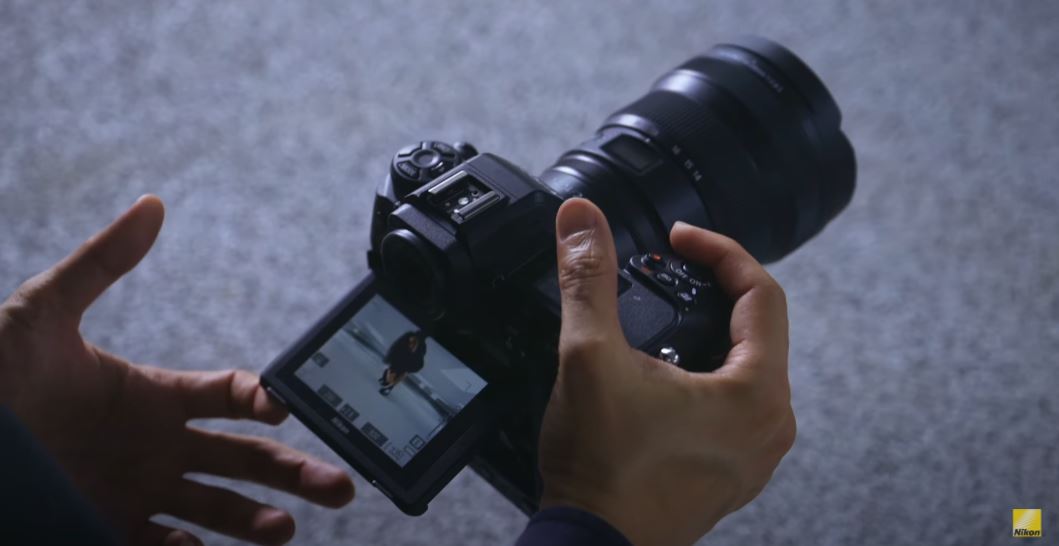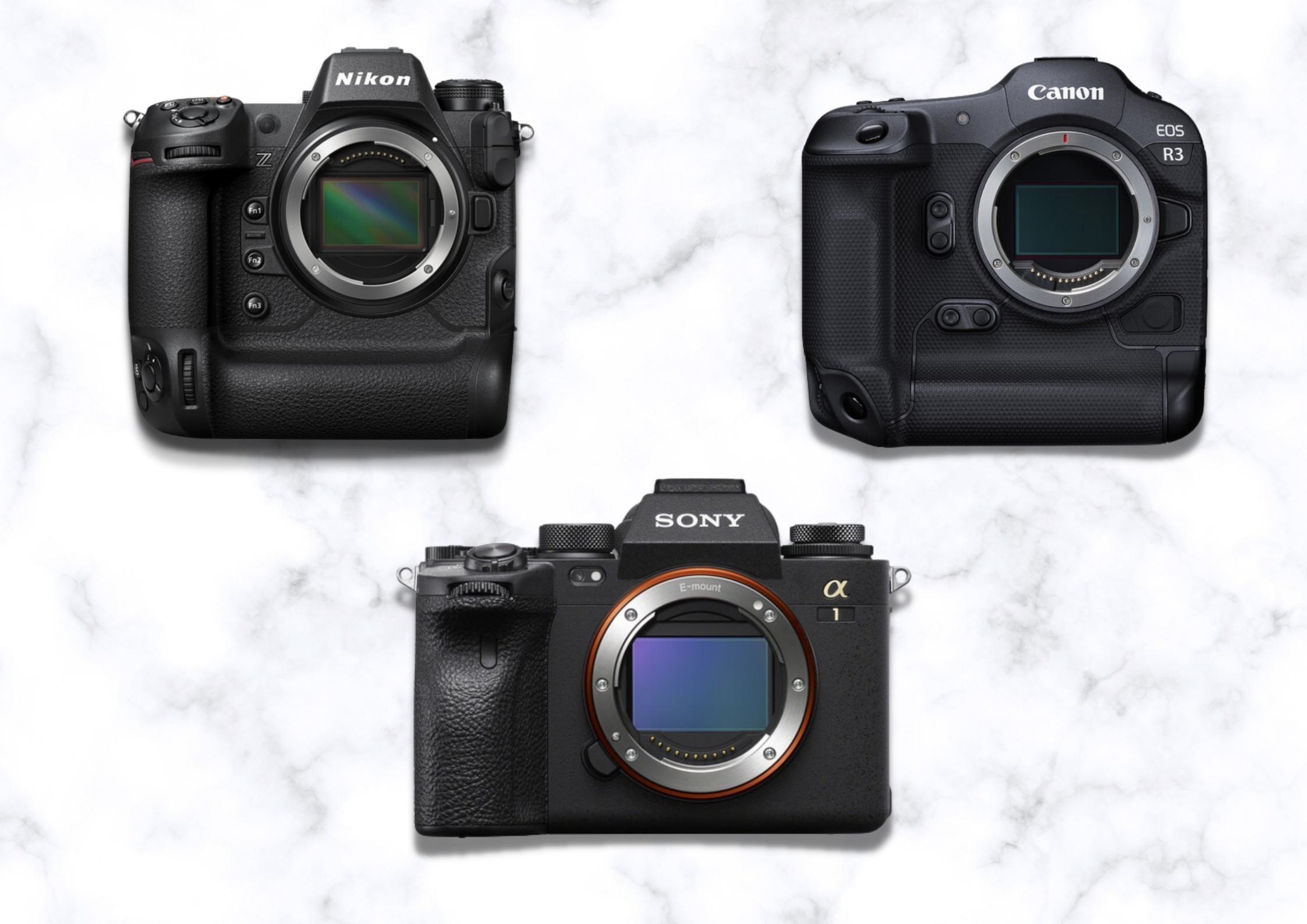This year welcomed three of the best full-frame mirrorless cameras in the market. The Sony A1 spearheaded the lineup while the Canon EOS R3 followed four months after. Now, the Nikon Z9 is set to shake the camera landscape.
With all three cameras finally announced, the lingering question is which camera to get? Of course, if you are already invested in either the Sony, Canon, or Nikon system, then you already have an idea on what to get.
But for first-time buyers, the Sony A1 vs Nikon Z9 vs Canon EOS R3 is a tough battle and we are here to help you decide.
Nikon Z9 vs Sony A1 vs Canon EOS R3: The Specs Round-Up
Sensor Size
When it comes to sensor specs alone, the Sony A1 is the winner with its 50-megapixel stacked full-frame CMOS sensor. Meanwhile, the Nikon Z9 is close with its 45.7-megapixel sensor. The Canon EOS R3 comes in last at 24-megapixels.
But sensor size is not everything. Having the smallest sensor does not mean that the Canon R3 is a slouch. It is still capable of taking excellent photographs, albeit, at a smaller resolution.

Continuous Shooting
All three cameras can take 30 fps JPEG images. However, only the Sony A1 and the Nikon Z9 can take RAW images at 20 fps. The A1 can do 30 fps lossy RAW and 20 fps lossless RAW. Meanwhile, the Canon R3 can fully utilize 30 FPS of RAW shooting.
Nikon has another trick up its sleeve though. The Z9 can take 120 fps JPEG images at 11-megapixels. It might be too small for some. But for web and social media images, 11-megapixels might be enough.
Image Stabilization
Image stabilization is not an issue for these cameras as well. All models have in-body image stabilization (IBIS).
Yet the Canon R3 has a slight edge in this department as it combines IBIS and lens stabilization for pitch/yaw adjustment. The lens takes over pitch/yaw for the Z9 and the A1.
Optics and Autofocus
The Canon EOS R3 has contrast-detect and phase-detect autofocus similar to the Sony A1. Both cameras have selective single-point, tracking, single, continuous, and touch autofocus. Face Detection and Live View autofocus are also available.
The Nikon Z9 is not that far in comparison, except it only has phase-detect autofocus.
The Canon R3 is the winner when it comes to the number of autofocus points. It has 1053 AF points while the Z9 has 493 and the A1 has 759.
The Nikon Z9 has an impressive automobile, motorcycle, and eye-tracking AF. The Sony A1 has eye and face tracking as well as animal eye tracking.
Nikon might be ahead of the bunch though when it comes to AF speed. Check out this video by Matt Granger as he tested the Nikon Z9.
Viewfinder
The viewfinder is large for all these cameras. Sony has a 0.9X viewfinder magnification though and it might seem a little bit larger. It also has better resolution compared to Canon and Nikon cameras.
The screen size is not that different too. All are 3.2 inches touchscreen with the Canon R3 having a full articulation.
The Sony A1 has the traditional tilting screen while the Nikon Z9 has a unique vertical tilting feature.

Photography Features
The Nikon Z9 has a 900 sec minimum shutter speed and a maximum shutter speed of 1/32000 sec.
With a mechanical shutter, the EOS R3 can go slow at 30 seconds like the Sony A1. But when it is set to electronic shutter, it can go up to 1/64000. Sony is stuck at 1/32000 with the electronic shutter.
All the usual modes are available too such as Aperture Priority, Shutter Priority and full Manual mode. But Canon still included Scene Intelligent Auto for quick snapshots.
When it comes to flashes, all cameras have no built-in flash as the intended market are professionals, who already have external flashes on hand.
That being said, the Sony A1 has a flash sync speed of 1/400 while the R3 has 1/250 sync speed. The Nikon Z9 has 1/200 sync speed.
All cameras, with the right flash, support high speed sync, which is great if you need more control over your lighting.
Videography Features
All three cameras shoot 4K videos. The Canon R3 shoots 4K up to 120p. But Sony and Nikon take it a notch higher with 8K recording.
Video recording has been Sony's turf recently and it shows with the Sony A1. It can take 8K videos with Log and can shoot 4K RAW video out via HDMI.
The Nikon Z9 surprised a lot with its 8K video recording capabilities for up to two hours of non-stop shooting. That is a huge win for videographers as they do not have to worry about overheating.
Videographers would be good to go with either of the three cameras. But for professionals, the Sony A1 and the Nikon Z9 would be the best choices.
Sony has extra features such as 1080p 240p for slow-mo footage. But also,
Nikon said that a firmware update is coming to the Z9 soon. This will include 12-bit raw video recording internally and ProRes 4K.

Storage and connectivity
These cameras have dual-card slots and support SDXC and CFExpress cards. But only the Sony A1 works with CFExpress Type-A. The R3 and the Z9 use CFExpress Type-B.
Moving on to connectivity, all cameras have a USB 3.2 Type C slot. They support USB charging and has HDMI outputs. Microphones and headphones are supported via dedicated ports.
Transferring images from camera to phone is easy via Wi-Fi and Bluetooth. There is a remote control for all cameras but it differs individually.
The EOS R3 and the Z9 can be controlled via smartphone. The Sony A1 can be controlled through Bluetooth or through USB tethering.
Build Quality
Like any modern flagship camera, the build quality for these cameras is stellar. All models have a magnesium alloy body. This means that it is durable enough to withstand long-term usage at any condition.
These cameras also have weather-sealing. It can survive unexpected downpours or has protection while shooting in the desert, for example.
But that does not mean you should beat it up in the rain. You still need to take precautions while using these cameras.
When it comes to looks, the Canon EOS R3 and the Nikon Z9 are physically larger compared to the Sony A1. This is due to the camera's built-in vertical grip while Sony has none.
The Canon R3 weighs 1015 grams including battery. The Nikon Z9 weighs 1340 grams - the heaviest of the bunch. While the Sony A1 is the lightest at 737 grams.
Battery Life
The Canon EOS R3 uses LP-E19 batteries and has a rating of up to 760 shots. Meanwhile, the Nikon Z9 uses the EN-EL19D batteries and can go up to 740 shots.
On the other hand, the Sony A1 uses NP-FZ100 batteries and has a rating of up to 530 shots. This is due to the smaller size of the camera compared to the R3 and the Z9.
Canon and Nikon traded compactness for functionality and better battery life.
Pricing and Availability
The Canon EOS R3 is priced at $5,999 while the Sony A1 is the most expensive at $6,500. The Nikon Z9 is the most affordable at $5,500.
The Canon R3 will be available this November 2021. The Sony A1 has been out in the market for several months now.
Lastly, the Nikon Z9 is still in pre-order phase.

Which camera system has the best lens collection?
When it comes to buying a camera, the body is not just the deciding factor. Lens selections should be considered as well. It would be a shame to jump to a camera system with limited lens choices.
Sony still has the largest lens collection in this comparison. There are currently 41 native G lenses available today. But besides the native Sony G Lenses, there are great options from third-party manufacturers such as Zeiss too.
The Nikon Z mount has expanded a lot these past few years too. There are more than 20 lenses to choose from and all focal lengths are covered. Third-party options are getting better as well. And with the right adapter, Nikon DSLR lenses can be used with the Z-mount cameras.
Lastly, the Canon RF mount has 23 lenses in its lineup with third-party options excluded.
That being said, all three brands have the holy trinity of lenses. The holy trinity is the term used for three lenses that cover different situations. It usually includes an ultrawide lens, a wide zoom lens, and a telephoto zoom lens.
Lens selection alone can go to Sony right now. However, Canon and Nikon have covered all the usual focal lengths as well so these two brands should not be out of the equation.
Which camera should you get?
The Nikon Z9 vs Sony A1 vs Canon EOS R3 discussion will not be over unless there is a clear winner. But at the same time, looking at the capabilities of these cameras, judging the best camera is a difficult task.
The Canon EOS R3 has its advantages such as image stabilization and number of AF points. Plus, the Canon color science is still stunning when it comes to portraits.
On the other hand, the Sony A1 brings flagship features that would benefit sports and action photographers greatly. The lens selection is great too, which means it is not difficult to find the perfect lens for any situation.
Lastly, the Nikon Z9 seems like the all-or-nothing release of Nikon considering that its previous camera were overshadowed by the competition. The specifications such as AF speed, build quality, photo and video quality are all top-notch.

In summary, it seems like the Nikon Z9 is the best among the three cameras today. And price is a huge factor. For $5,500, you are getting a flagship device that can rival Sony's video capabilities as well as take excellent photos Nikon is famous for.
Price the Sony A1 lower then the competition gets tougher. But for now, the Nikon Z9 takes the cake.
Now, if you are invested in a camera system already, then get the equivalent flagship camera. It would be bothersome to change a system totally.
That's it for our Nikon Z9, Sony A1, and Canon EOS R3 round-up. Let us know what you think in the comment section below. Feel free to share your photos too and tag us on Instagram @ProMediaGear.

